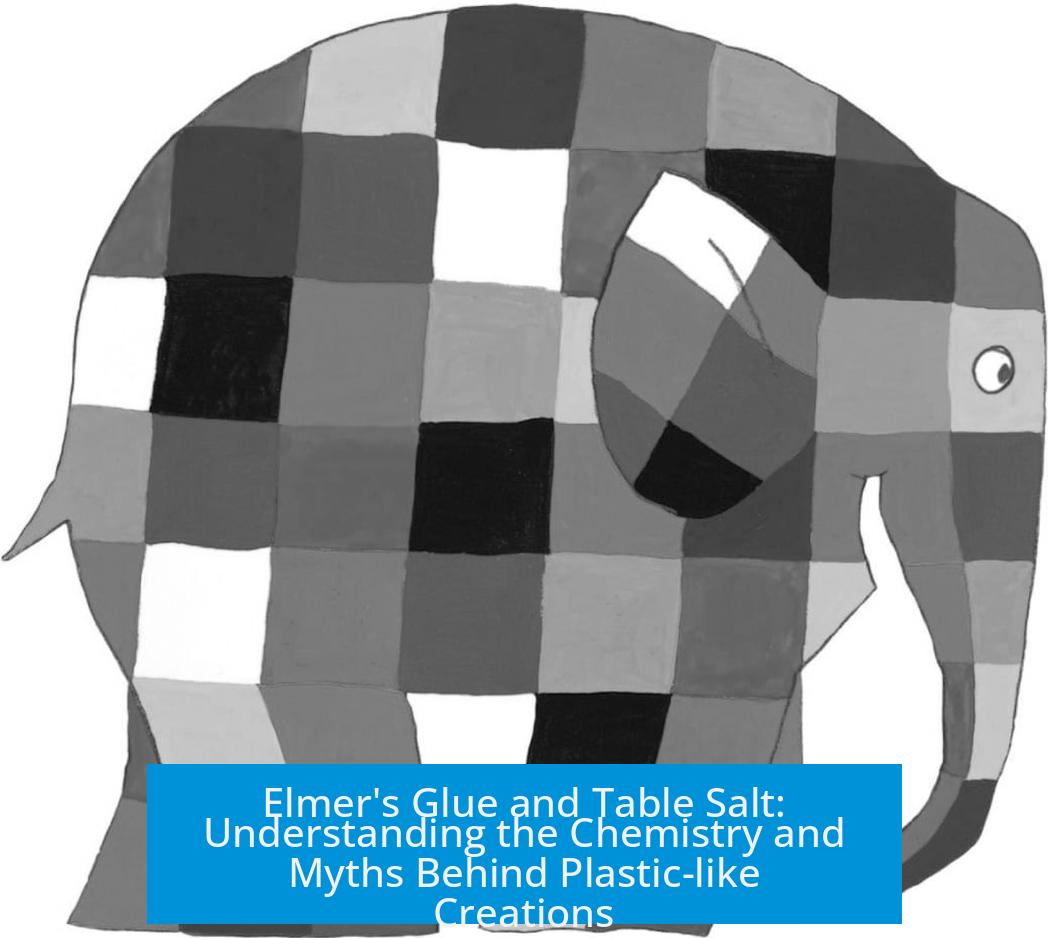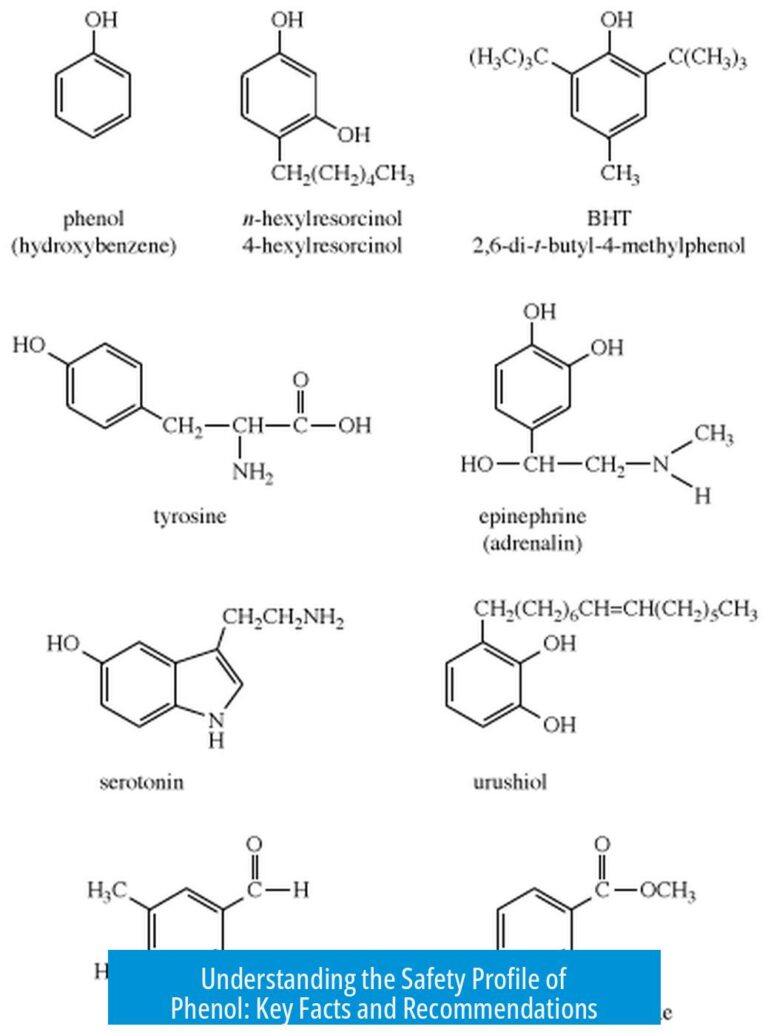Elmer’s Glue and Table Salt Make Plastic-ish Stuff: What Really Happens?

Elmer’s glue combined with table salt does not chemically produce plastic-like material. Instead, the plasticish substance often results from cross-linking polyvinyl alcohol (PVA) in the glue with borax, a compound frequently mistaken for table salt. Table salt may influence the glue’s properties physically, but it does not react chemically to form plastic.
Understanding the Chemistry of Elmer’s Glue
Elmer’s glue primarily contains polyvinyl alcohol (PVA). This polymer is water-soluble and forms the base for many craft projects involving “slime” or flexible gels. The key to turning glue into a plastic-like substance lies in altering the molecular interactions within the PVA chains.
PVA molecules possess hydroxyl (-OH) groups that allow them to form hydrogen bonds with water and each other. This creates a flexible yet soluble glue solution. Modifying these interactions can result in new materials with different physical characteristics.
Does Table Salt (Sodium Chloride) React with PVA? No Chemical Reaction
Table salt, chemically sodium chloride (NaCl), is a simple ionic compound. Chemically, it does not react with PVA in glue. No covalent bonds form between NaCl and the polymer chains in PVA.
The primary interactions between NaCl and PVA are physical, such as ionic strength affecting polymer chain aggregation and crystallinity. Sodium and chloride ions may change how PVA chains pack together, but they do not cause cross-linking or polymer chain bonding. Therefore, salt alone cannot convert glue into true plastic-like material.
Likely Confusion: Borax Instead of Table Salt
Many reports that suggest table salt creates slime or plasticish substances from glue are likely confusing table salt with borax (sodium tetraborate). Both appear as white powders and can be mistaken visually.
- Borax is a white crystalline compound used commonly as a water softener and cleaning agent.
- Borax chemically interacts with the -OH groups on PVA, cross-linking polymer chains.
- This cross-linking permanently binds molecular chains, creating an insoluble gel.
Because borax cross-links PVA chains, it forms a network that traps water and produces a slime or plastic-like gel. This gel can become hard and brittle when dried. The cross-linking mechanism is vital to forming the “plastic-ish” material from Elmer’s glue.
Chemical Interaction of Borax with PVA: The Cross-linking Process
Borax (Na2B4O7·10H2O) dissolves in water to give borate ions, which interact with PVA polymer chains. The borate ions form ester-like bonds with the hydroxyl groups on PVA, effectively linking multiple polymer molecules.
This cross-linking transforms the solution into a three-dimensional polymer network, turning the liquid glue into an insoluble gel that exhibits plastic-like mechanical properties.
Such gels trap water molecules, exhibit elasticity, and can dry to form hard, plastic-like films. This behavior underlies classic slime recipes using glue and borax.
Physical Effects of Table Salt on PVA Glue
Though table salt does not chemically bond with PVA, it can influence the physical structure of the glue mixture. Possible effects include:
- Salt crystals act as fillers: When mixed into glue, undissolved salt crystals distribute within the polymer matrix, potentially reinforcing the structure.
- Salt influences polymer solution behavior: Salt ions modify the ionic environment, causing polymer chains to aggregate or precipitate.
- Accelerated drying: Salt may influence water evaporation rates by altering water’s chemical activity.
- Enhanced crystallinity: Sodium chloride presence can encourage PVA chains to arrange into more crystalline forms, which reduces water solubility and increases strength.
Thus, the “plasticish” trait observed in glue mixed with salt might reflect physical reinforcement and drying behavior rather than chemical transformation.
The Role of Polymer Crystallinity and Hydrolysis Degree
PVA’s properties depend heavily on its molecular weight and degree of hydrolysis—the extent to which polyvinyl acetate is converted into polyvinyl alcohol.
| Degree of Hydrolysis | Effect on PVA |
|---|---|
| Low (<80%) | Higher water solubility, less crystalline |
| Medium (80-90%) | Moderate solubility and crystallinity |
| High (>90%) | Low solubility, high crystallinity, stronger films |
High crystallinity in PVA leads to stronger, less soluble films when dried, contributing to plastic-like material properties. Salt can promote crystallinity by encouraging polymer chain packing and aggregation.
Dismissing Incorrect Speculations: PVA Does Not Convert to PVC by Salt
Some may wonder if adding chloride from table salt replaces hydroxyl groups in PVA to form polyvinyl chloride (PVC). This is incorrect. Such substitution requires specialized chemical processes, including radical polymerization and harsh reagents.
Mixing PVA glue with sodium chloride alone does not produce PVC. This misconception should be clarified to avoid misunderstandings about polymer chemistry.
Summary of How Glue and Table Salt Interact
- PVA in glue is water-soluble and forms flexible films when dried.
- Table salt (NaCl) does not chemically react with PVA but affects its physical properties.
- Salt may act as filler and influence drying and crystallinity, making dried glue appear more solid.
- Plastic-like slime or gels typically require borax, which cross-links PVA chains chemically.
- The presence of salt can speed drying and slightly alter mechanical texture but not create true plastic.
Practical Implications for Craft and Science
When mixing Elmer’s glue for a plastic-like effect:
- Use borax or similar cross-linkers to achieve the characteristic slime or rubbery texture.
- Adding table salt may change drying time and texture but does not create cross-linked gels.
- Be cautious in identifying ingredients, as borax and salt appear similar but differ chemically.
- Understand polymer chemistry basics to predict outcomes in DIY projects.
Those seeking plastic-like substances should rely on proper cross-linkers, not just salt, to manipulate PVA glue effectively.
Key Takeaways
- Table salt does not chemically react with PVA in Elmer’s glue to form plastic-like materials.
- Borax chemically cross-links PVA, producing slime or gels with plasticish properties.
- Salt primarily affects physical properties, influencing drying speed and polymer crystallinity.
- PVA’s hydrolysis degree and molecular weight influence its water solubility and final texture.
- Misidentification of borax as salt causes confusion about reaction mechanisms.





Leave a Comment